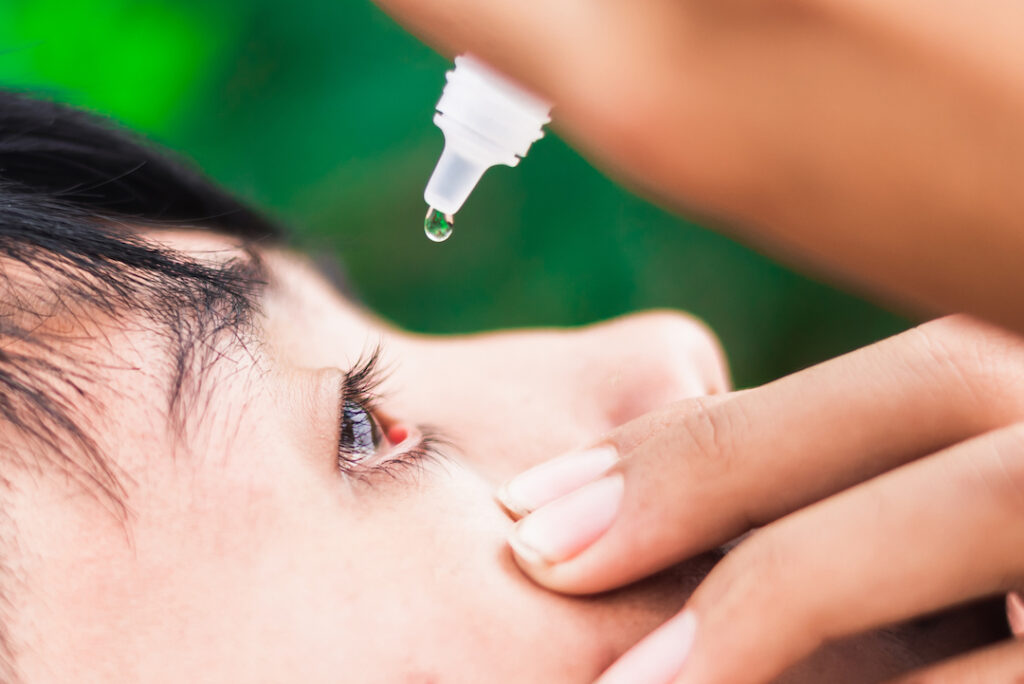Seeing through the Symptoms: The Power of Eye Drops in Conjunctivitis Treatment
(Posted on Monday, December 4, 2023)

This article was published on Forbes on 11/26/2023.
This story is part of a series on the current progression in Regenerative Medicine. This piece is part of a series dedicated to the eye and improvements in restoring vision.
In 1999, I defined regenerative medicine as the collection of interventions that restore to normal function tissues and organs that have been damaged by disease, injured by trauma, or worn by time. I include a full spectrum of chemical, gene, and protein-based medicines, cell-based therapies, and biomechanical interventions that achieve that goal.
Conjunctivitis, commonly known as pink eye, is a prevalent eye condition that causes inflammation and swelling of the conjunctival tissue. The conjunctiva is a thin, transparent membrane covering the eye’s white part and the eyelid’s inner surface. This inflammation causes redness and irritation by engorging eye vessels. Alongside visual symptoms, conjunctivitis can cause discomfort like eye discharge, itching, burning sensation, and heightened sensitivity to light.
Facts About Conjunctivitis
The causes of conjunctivitis can vary, which include bacterial or viral infections, allergic reactions, and irritants such as smoke, pollution, or chemicals that come into contact with the eye. Bacterial conjunctivitis is often induced by the same bacteria responsible for strep throat, whereas viral conjunctivitis is commonly associated with the common cold or other respiratory infections. On the other hand, allergic conjunctivitis stems from an immune response triggered by allergens like pollen, dust mites, or animal dander.
Bacterial conjunctivitis is typically treated with antibiotics, while viral conjunctivitis may not require specific treatment and can clear up independently. Allergic conjunctivitis can be treated with antihistamines through eye drops or oral medications. In some cases, topical steroids may be prescribed to reduce inflammation. Lubricating eye drops may also be recommended to soothe dry and irritated eyes. In severe cases, a combination of different eye drops may be prescribed.
Efficacy of Eye Drops in Treating Eye Infection
A study published in the Journal of Ophthalmic & Vision Research has shown that antibiotic eye drops are highly effective in treating bacterial conjunctivitis. The study found that these eye drops successfully treated the infection in 96.8% of cases.
Antibiotic eye drops contain active ingredients that target the bacterial cell wall. The cell wall is an essential component of the bacteria’s survival mechanism. Antibiotics bind to the bacterial cell wall, disrupting its integrity and causing it to rupture and die. As a result, the infection resolves, and the symptoms subside.
Bacterial conjunctivitis is commonly treated with polymyxin B, bacitracin, and erythromycin. The antibiotic choice depends on the infection’s severity, the patient’s age, and any underlying medical conditions. Completing the entire course of antibiotics is crucial to effectively eliminate the disease, even if the symptoms have subsided. Failure to do so may cause a relapse of the condition and increase the risk of antibiotic resistance.
Eye Drops for Allergic Conjunctivitis
Allergic conjunctivitis is another type that occurs due to the body’s hypersensitivity to allergens such as pollen, dust mites, and pet dander. Unlike bacterial conjunctivitis, allergic conjunctivitis does not require antibiotics. Instead, antihistamine and mast cell stabilizing eye drops provide relief from the symptoms.
Antihistamine eye drops are a medication used to treat allergic conjunctivitis, in which the eyes become irritated and inflamed due to an allergic reaction. These eye drops contain antihistamines, which are drugs that work by blocking histamine receptors in the eyes. Histamine is a chemical released by the body in response to allergens, and it is responsible for causing symptoms like itching, redness, and swelling.
By blocking histamine receptors, antihistamine eye drops prevent the release of histamine and reduce the severity of allergy symptoms. This makes them an effective treatment option for people who experience allergic conjunctivitis. In fact, a study published by the University of Oulu found that eye drops containing antihistamines and steroids were highly effective in treating this condition, with symptom relief observed in as little as 24 hours.
Mast cell stabilizing eye drops work by preventing the activation and release of histamine, prostaglandins, and leukotrienes from mast cells, which reduces inflammation and alleviates allergy symptoms. Mast cell stabilizers take a few days to work but provide long-term relief from allergies.
Innovation in Eye Drop Technology Continues to Progress
Significant advances in eye drop technology have transformed the treatment of eye diseases. Eye drops have a lower risk of adverse effects and provide the flexibility of developing combination eye drops that contain numerous active ingredients. Patients with sensitive eyes or long-term treatment requirements can benefit from improved treatment outcomes by developing preservative-free eye drops.
Ongoing research and development in this field are paving the way for even more improvements in eye drop technology. One such development is using nanoparticles to deliver medication directly to the eye, reducing the need for frequent administration and improving treatment outcomes. Another promising development is gene therapy to treat genetic eye diseases, which could provide a permanent cure for these conditions.
Overall, the continued advances in eye drop technology are a promising sign for those with eye diseases. With further research and development, we can expect to see even more innovative treatments that will improve the quality of life for patients and reduce the burden of eye diseases on society.
To learn more about the eye, read more stories at www.williamhaseltine.com

